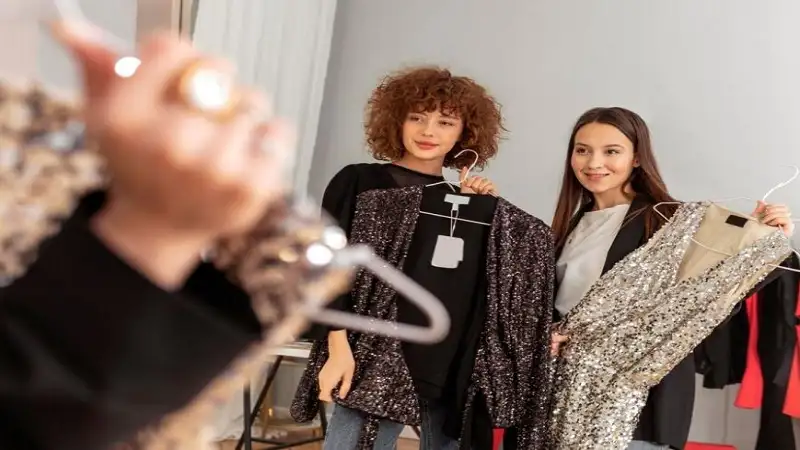Fashion education programs have expanded beyond conventional design approaches, emphasizing vintage trends more heavily. Vintage fashion is making a comeback not only within the fashion industry but also within classrooms of design institutions; this shift signals a growing appreciation of its timeless charms and sustainable qualities as an asset in contemporary design education.
Investigating Historical Significance
Fashion education is experiencing a remarkable transformation, incorporating modules exploring the historical significance of different fashion eras. Students no longer only focus on contemporary trends; they are encouraged to travel through time, exploring how style, silhouettes, and fabrics have developed over time, and Italian fashion bloggers help with that. This contextual knowledge goes beyond aesthetics – giving students insight into cultural and societal forces shaping fashion trends that shape modern-day styles. By studying vintage pieces or dissecting runway shows from bygone eras, they gain deeper insights into craftsmanship techniques that endure and continue to influence modern-day fashion trends.
Revival of Techniques
Vintage fashion is more than styles; it’s also about recovering lost art forms and techniques integral to garment construction. Fashion education programs are encouraging a comeback of traditional craftsmanship and sewing methods that once comprised the backbone of garment production – from intricate hand embroidery that tells stories to pattern-making that defines structure; students are being encouraged to embrace these artisanal skills that add not only authenticity to designs but also align with sustainability in fashion production, marrying aesthetics with ethical considerations.
Sustainability and Slow Fashion
Fashion education programs have emerged as an avenue of change within the fashion industry’s effort to reduce its environmental footprint. Vintage fashion, emphasizing long-term wear and timeless design, aligns perfectly with slow fashion principles. Students learn the value of investing in quality garments that transcend trends while developing more mindful consumption practices. Integrating vintage elements into modern designs becomes a conscious decision creating greater responsibility and ethical consideration within fashion education – it marks a paradigm shift toward a more eco-conscious future.
Archival Research and Curation
Fashion students are not just designers; they are encouraged to become keepers of history. Archival research becomes an exciting part of the curriculum, opening up forgotten trends and styles with historical importance. If you ever thought “I want to write my paper cheap” archives or internet resources are the way. Visits to fashion archives and museums become integral parts of education; students can touch, feel, and study garments up close in fashion archives or museums – an experience that fosters a reverence for fashion history while giving students insight into its legacy that informs and enriches their design narratives.
Inspiration for Modern Designs
Vintage fashion isn’t static; it remains an inspiration that continues to shape modern designs. Fashion education programs don’t just teach history; they encourage students to reinterpret classic styles from specific eras while remaining relevant today. By understanding which design elements made particular ages distinct, students can create collections that pay homage to past aesthetics while remaining contemporary aesthetics – further enriching today’s fashion landscape! This fusion between old and new speaks to its timelessness and contributes substantially to its depth.
Entrepreneurial Opportunities
Fashion education has evolved beyond creating designers; it fosters entrepreneurs who understand market dynamics. Vintage fashion’s distinct charm offers endless entrepreneurial opportunities. Students not only learn to appreciate its market but are guided in curating their collections as a practical experience that equips them with skills necessary for the business side of fashion, encouraging innovation and entrepreneurship along the way. Vintage is not simply another trend but an untapped market with unexplored potential that needs further exploration.
Breaking Gender Stereotypes and Norms
Vintage fashion is inherently defiant, often breaking traditional gender norms and stereotypes. Fashion education programs focusing on vintage trends actively encourage students to experiment with androgynous styles, reinterpret historically gendered fashion, and break conventional boundaries. This progressive approach not only mirrors changing attitudes about gender in society but also challenges students to think inclusively and broaden their design perspectives – turning vintage fashion into an outlet for pushing limits and redefining norms within the fashion landscape.
Collaborations with Vintage Boutiques and Thrift Stores
Fashion programs are increasingly forging partnerships with vintage boutiques and thrift stores to give students hands-on experience working with authentic vintage pieces, curating collections, understanding business aspects of vintage fashion markets, pricing vintage fashion appropriately, and preparing students comprehensively for this dynamic retailing industry.
Acknowledging Diversity and Inclusivity
Vintage fashion expresses cultural diversity through styles, fabrics, and cultural influences. Fashion education programs that embrace vintage trends take this celebration one step further by prioritizing inclusivity in design. Students are not only encouraged but empowered to explore global fashion histories, drawing inspiration from a range of cultures and traditions – this approach not only enriches students’ learning experience but also contributes to creating more inclusive fashion designers of tomorrow – vintage serves as a medium through which diverse voices and narratives can be expressed across borders creating a global fashion revolution that resonates globally!
Conclusion
Incorporating vintage trends into fashion education programs signifies a transformation towards more holistic and eco-friendly approaches to design. By exploring historical, cultural, and artisanal aspects of vintage fashion, students are not only equipped with valuable skills. Still, they are also inspired to contribute toward creating a more responsible fashion industry. From the classroom to the catwalk, the revival of vintage trends in fashion education creates designers of tomorrow who revere its timeless beauty while forging sustainable careers in an evolving industry.
